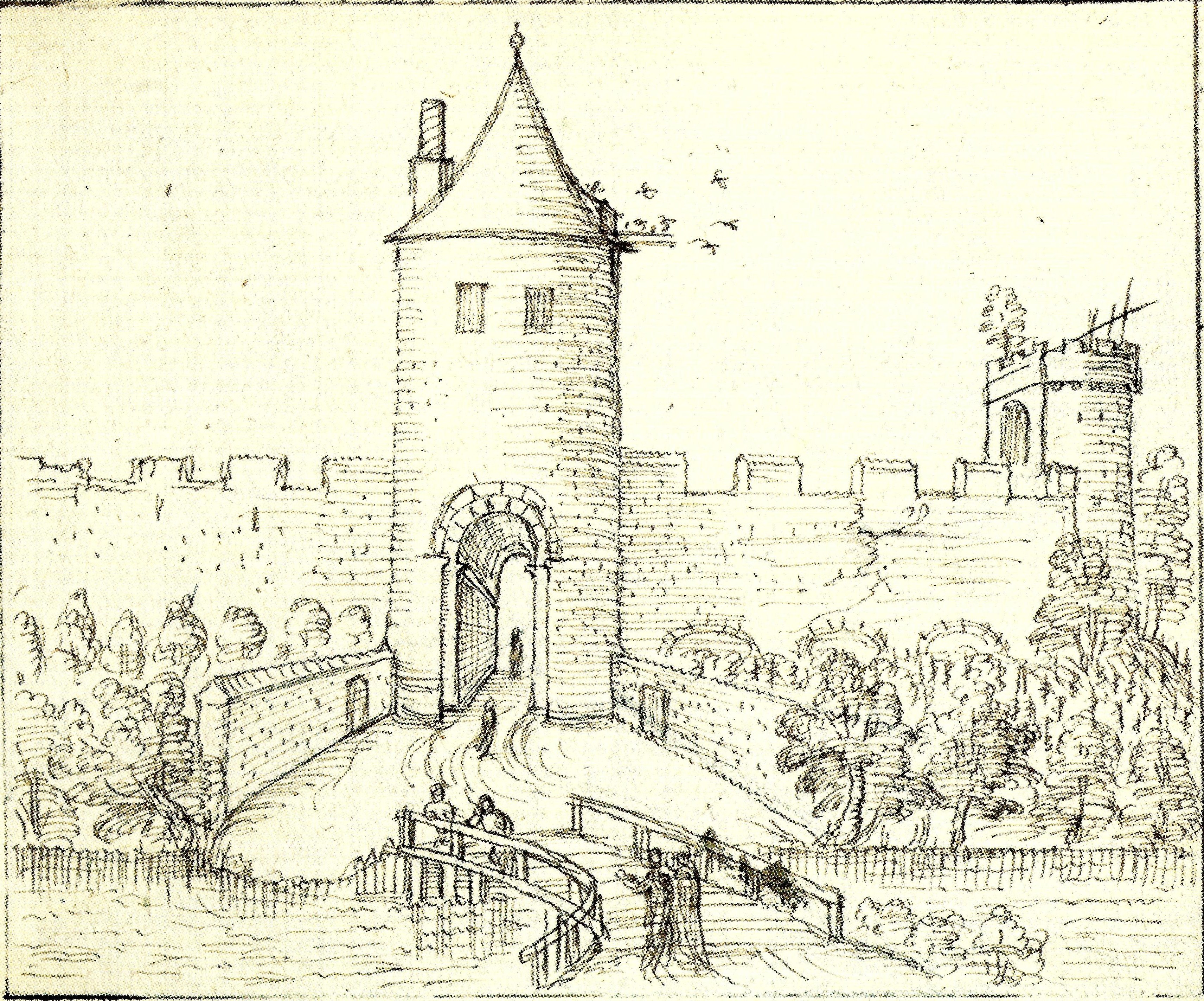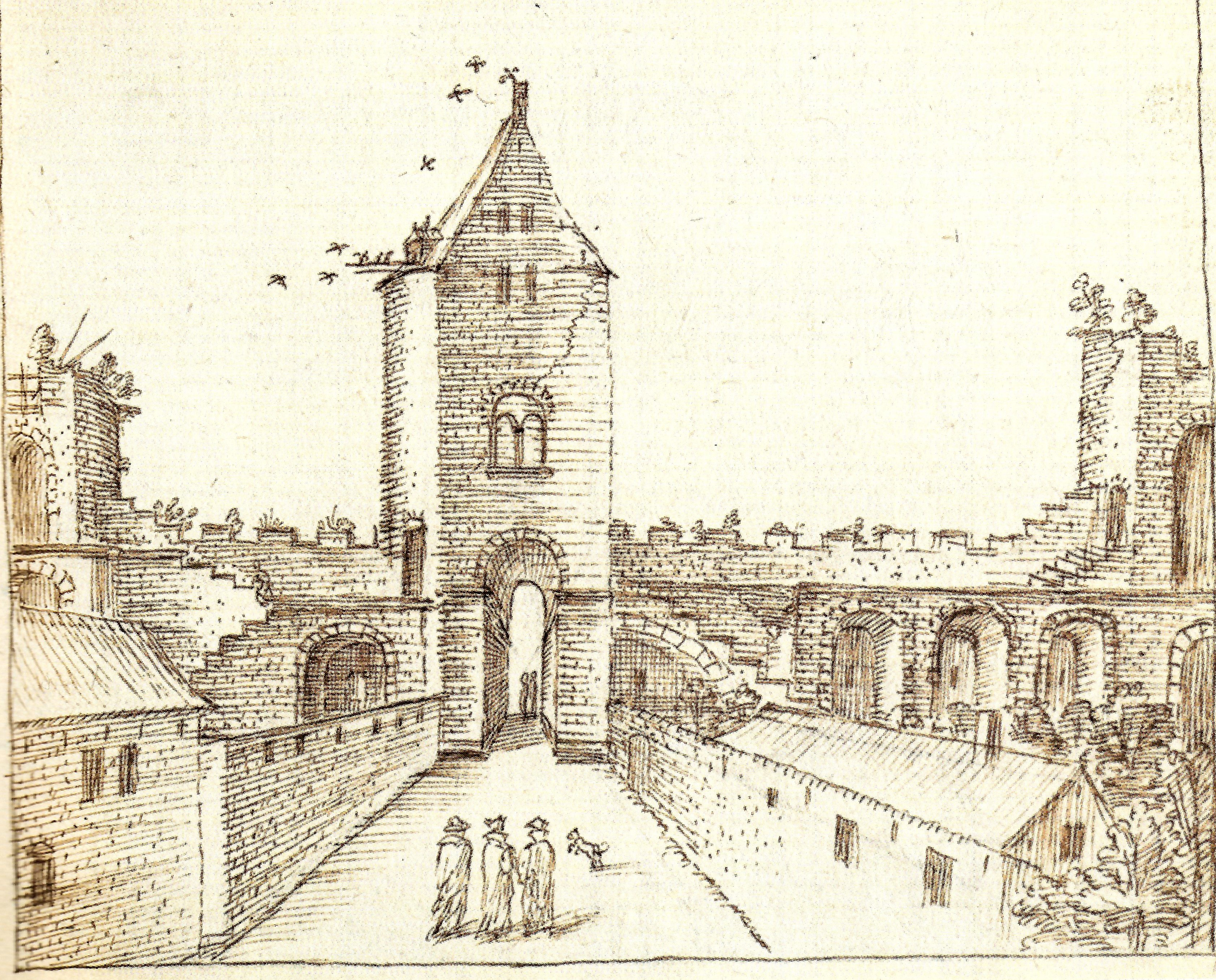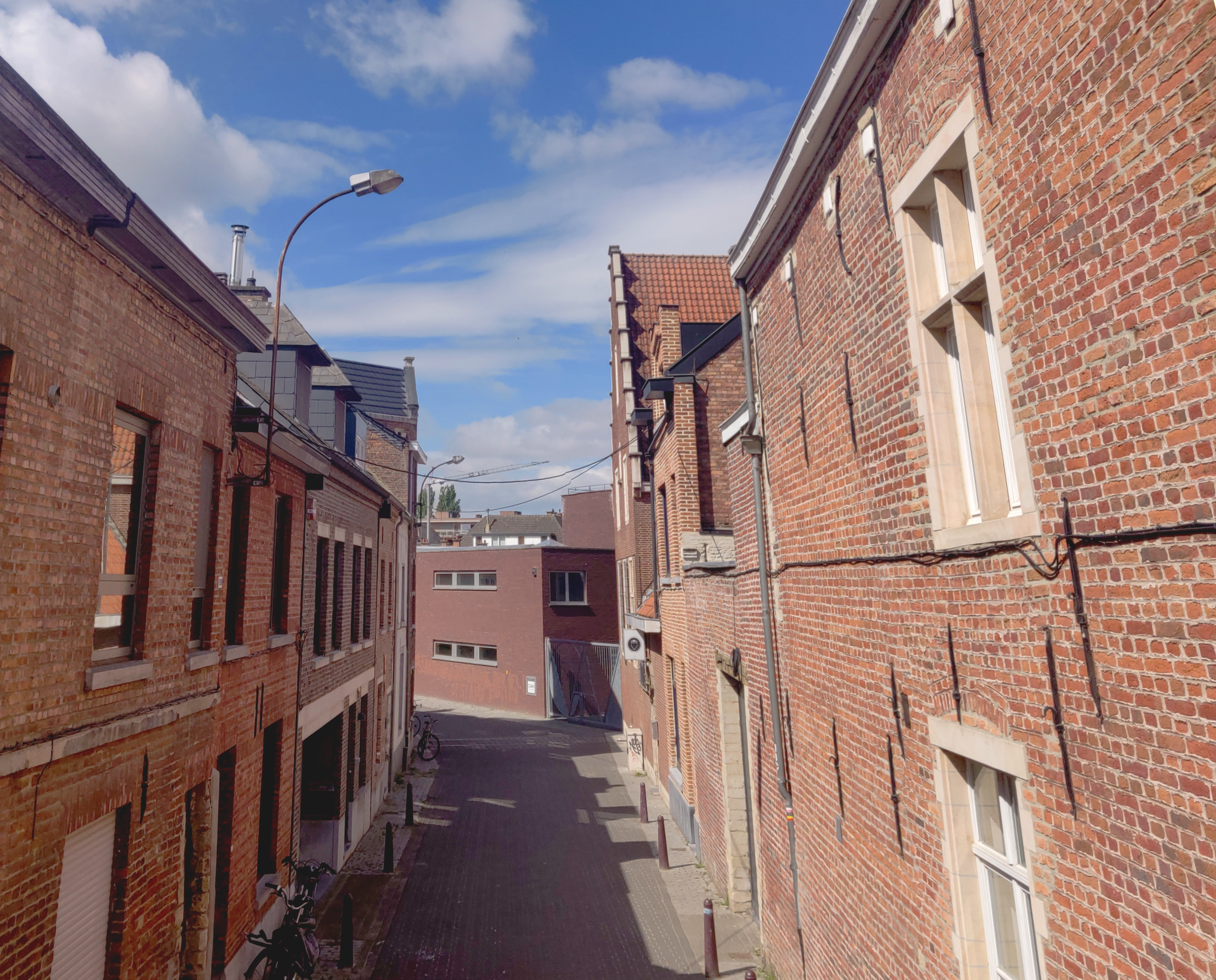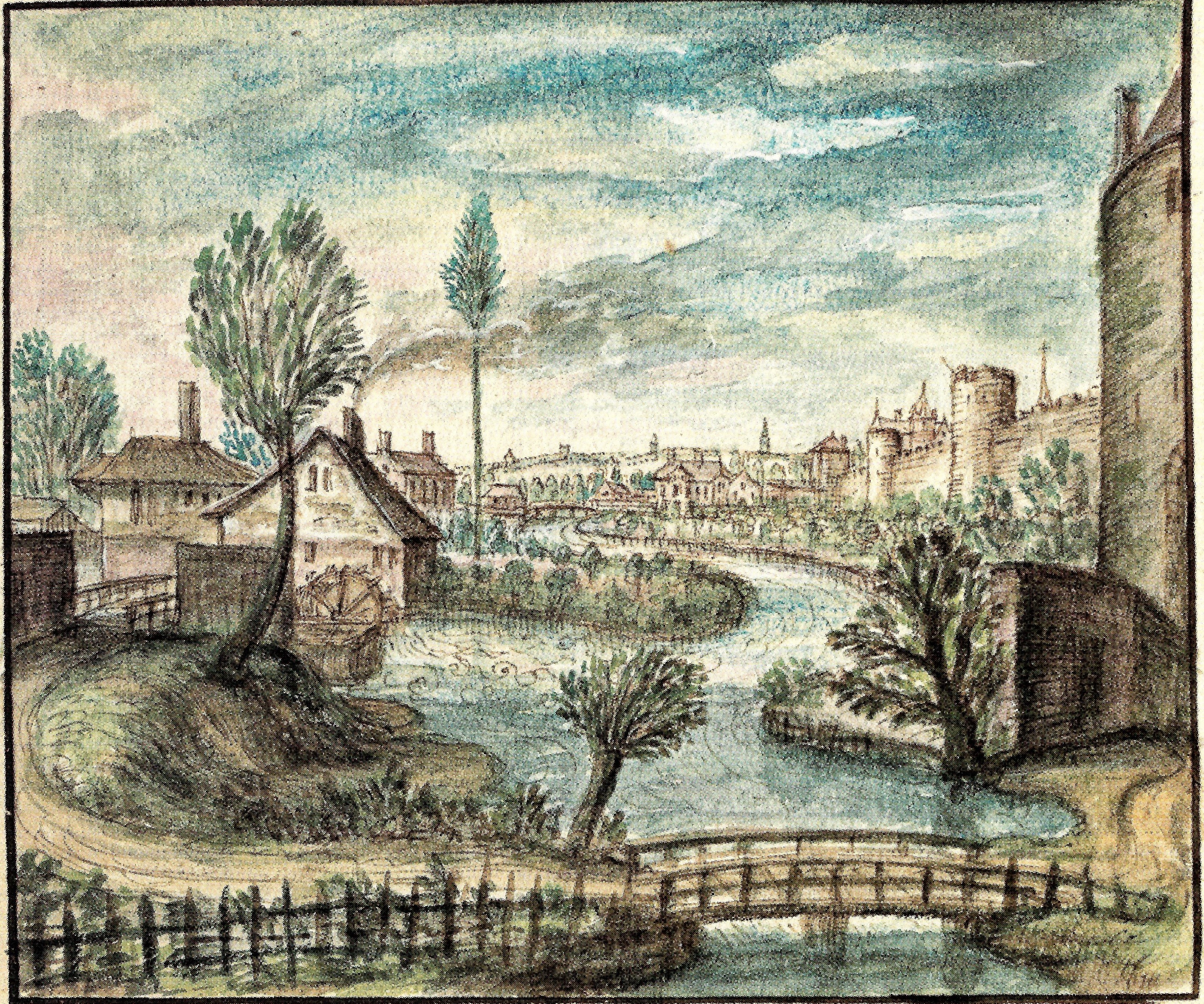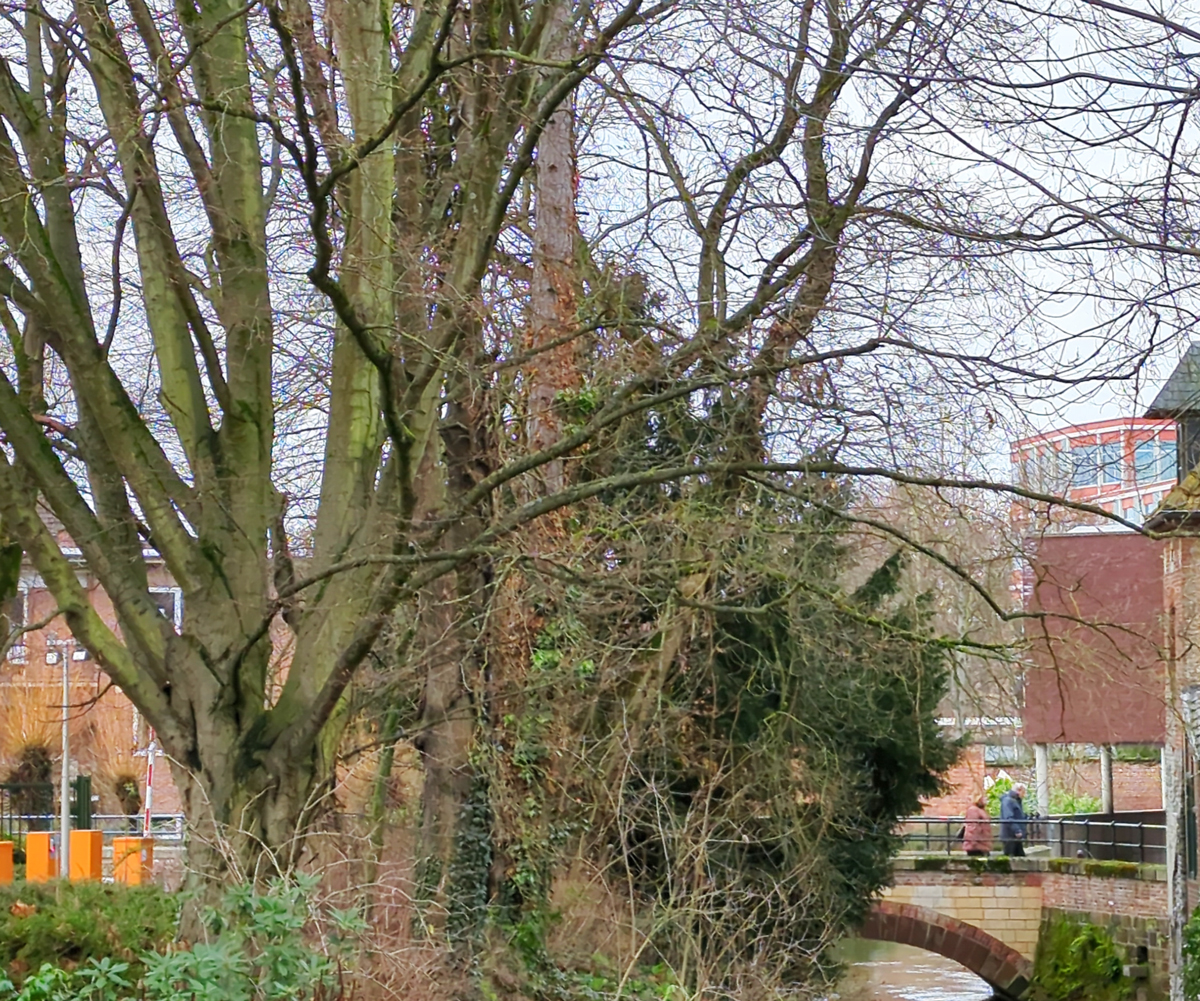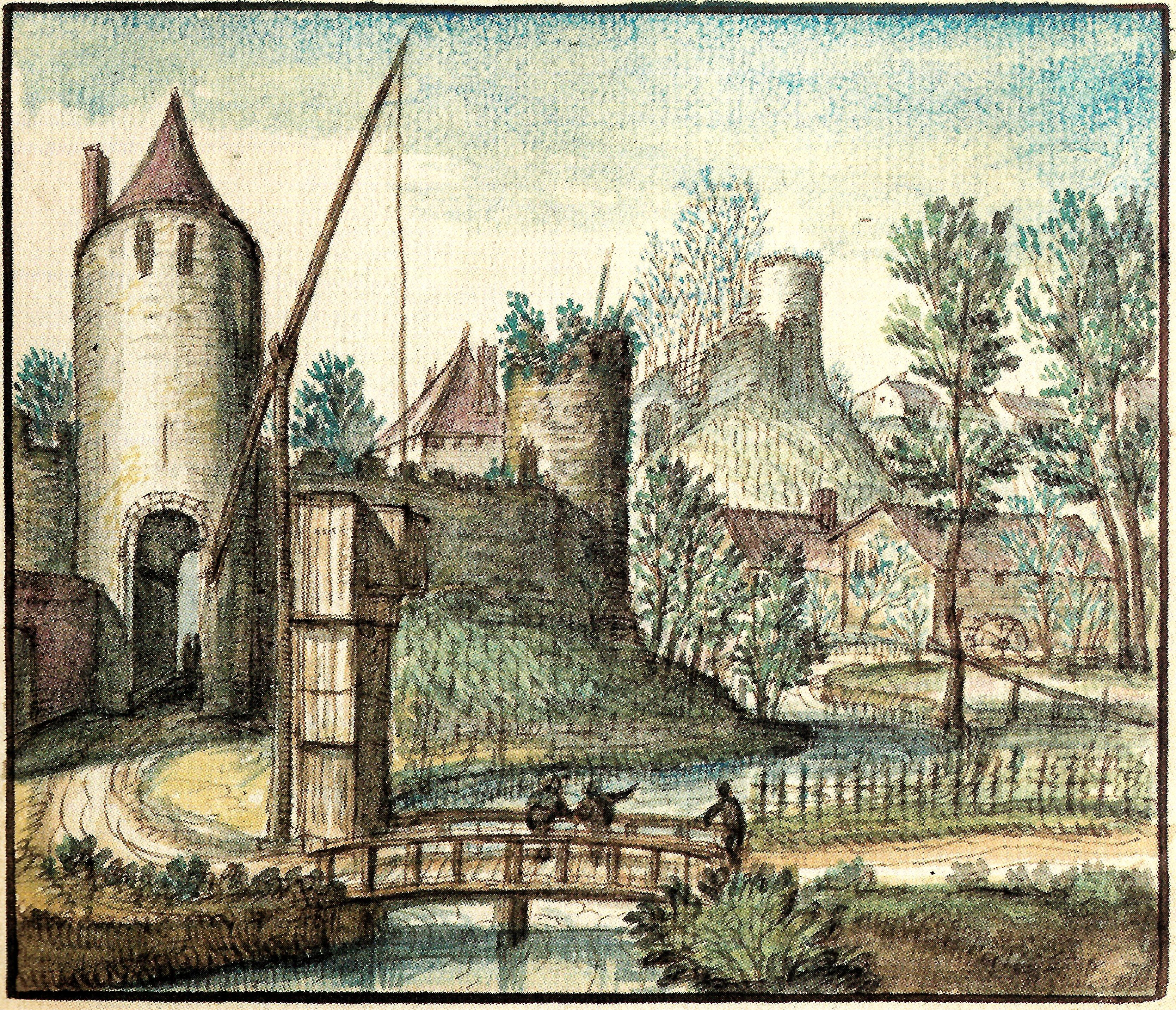ABOUT
The Redingenpoort (Redingen Gate) was located in the Redingenstraat, not far from its junction with the Schapenstraat.
Origin
The First and Inner Defence Wall of Leuven: After 1190
In the Early Middle Ages, Leuven was defended by a primitive fence that stretched from the Aardappelmarkt (modern-day Vital Decosterstraat) to the Redingenstraat, while an arm of the River Dijle formed a natural border.
By the 13th century, when the city grew to be the permanent residence of the Count of Leuven and Brussels, the need for a stronger defense bulwark became urgent. Historians have traditionally dated the construction of Leuven’s first defense walls to be between 1156 and 1165, during the reign of Count Godfried III, due to the yearly tax he imposed on citizens for defense. However, the military features of Leuven’s wall such as anchor towers, arrowslits etc cannot date before the 1200s, making this estimate too early. It is now generally accepted that Leuven’s first city wall was built by Henry I (Henrik), the first Duke of Brabant (1190-1235). He also abolished his father’s defense tax in 1233.
Constructed with layers of sandstone from nearby Diegem and Zaventem and ironstone, the first defense wall was roughly 2,740 metres long with 31 watch towers, 11 city gates and 2 water gates.
The wall measures 1.70m thick and rests on a series of underground arches. On the field side, the wall rises to about 5m tall. On the inside, a continuous series of arches supported a three-foot-wide walkway. The wall had arrowslits that were reduced on the outside to a narrow opening of 90cm high and 5cm wide.
However, as the city grew rapidly in size, a second (outer) more impressive defence wall was built in 1357, rendering the inner wall somewhat redundant. But the inner wall and gates were not immediately torn down. Most of it only disappeared in the 18th and 19th centuries. Even so, we see more of Leuven’s inner city wall today than the more recent outer city wall. Very well-preserved remnants of the 12th-13th century wall can still be seen in the City Park, as well as in the Refugehof, the Handbooghof, in the Redingenstraat behind the Irish College, and on the Hertogensite. The outer city wall and gates were torn down completely in the 19th and 20th centuries to become today’s ring road around the city.
Below is the list of the gates of Leuven’s first city wall starting from the north going eastwards:
- Steenpoort
- Heilige-Geestpoort
- Sint-Michielspoort
- Proefstraatpoort
- Wolvenpoort
- Redingenpoort
- Broekstraatpoort/Liemingepoort
- Justus Lipsiustoren-Janseniustoren*
- Minderbroederspoort
- Biestpoort
- Minnepoort
- Borchtpoort
- Sint-Geertruisluis*
*water gates.
How did the Redingenpoort look like?
According to 19th century historian Edward van Even, the Redingenpoort was the most unremarkable-looking of all of Leuven’s inner city gates. It was a simple tower with a gateway underneath. It was relatively small, compared with other inner city gates, and it led directly onto a flimsy wooden bridge that crossed over to the island of Ten Hove, that used to be the first court of Leuven. Today, the site is most likely within the compounds of the Groot Begijnhof further south on the island.
16th century humanist Justus Lipsius called it the Porta Molinaria (Mill Gate), because it led to the mills of Boemale.
It was also called the Nyvelsche Binne-Poort (Nijvel Inner Gate) because it used to be the road to the city of Nijvel, before the Naamsesteenweg was built.
What's so special about this place?
One of the Seven Clans of Leuven: Redingen
While the Redingenpoort may not be of any significance, the name does. The Redingenpoort used to lead directly to the property of the Redingen family, who was one of the Seven Clans of Leuven. Their estate spread over a huge area, which included their mansion, today’s Redingenhof, and the mills that doted along the Dijle river here.
So who were the Seven Clans of Leuven?
According to 16th century historian Willem Boonen, who wrote about the the history of Leuven in 1593-1594:
“Hertog Carolus Calvus had de heer ridder Bastijn, bijgenaamd de Groote, aangesteld als graaf in Leuven. Bastijn huwde met een dochter van de graaf van Vlaanderen en had acht kinderen: één zoon, Volckaert, die in 900 bisschop van Luik werd, en ervolgens zeven dochters Plectrudis, Alpaidis, Betraert, Hildegarde, Ermgaert, Judith en Swane. Om het geslacht verder te zetten kon de graaf dus niet rekenen op zijn zoon en zocht hij bijgevolg voor elk van zijn dochters een waardig ridder als echtgenoot.”
Duke Carolus Calvus installed Bastijn the Great as the Count of Leuven. Bastijn married the daughter of the Count of Flanders who gave him a son, Volckaert who went on to become the Bishop of Liège in the year 900. The seven daughters – Plectrudis, Alpaidis, Betraert, Hildegarde, Ermgaert, Judith and Swane – were each wedded with a worthy knight in order to preserve the lineage.
The Seven Clans of Leuven were thus the knightly families of the sons-in-law of Bastijn. They were by order:
- Uten Liemingen [Uten Liemminge] (Ebroin, husband of Plectrudis/Plectrude)
- Van der Calsteren [van den Calstre] (Minard, husband of Alpaidis/Alpaïde)
- Van Redingen (Meys, husband of Betraert/Betrude)
- Van den Steene (Louis, husband of Hildegarde)
- Verusalem (Ebroin, husband of Ermgaert/Ermengarde)
- Gielis (Salomon, husband of Judith)
- Van Rode (Francon, husband of Swane)
Upon the death of Bastijn, each Clan shared his power equally in the form of council seals. Traditionally, only members of the Seven Clans could sit on the city council. Soon, the clans were split into two fractions: the “Colveren” vs the “Blankaerden“, who were constantly at odds with each other. There is no historical proof of these families being truly of noble descent, as recounted in this story. But they did exist, as they were the ruling class who wielded a lot of political and economic power in Leuven in the Middle Ages.
Traces of the Old City Wall
The Redingenpoort was repaired in 1363, 1369 and then again in 1430. By 1770, when it was demolished, it was already a pile of ruins. Fortunately for us, the old city wall to which the Redingenpoort was attached still exists today. It is located in the back garden of the Centrum Algemeen Welzijnswerk (Centre for General Welfare Work), right on the Redingenstraat where the city gate once stood. This preservation allows us to see the foundation of the first city wall when it was most closely located to the gate.
The Dijle Duck
The water fountain on the Redingenstraat that featured a duck by a basin was installed on 9 November 2003. Sculpted by René Rosseel, the duck fountain is actually a wishing well, with the following instructions:
“Men wrijve driemaal over den rug van het beest, men grijpe de staart met de pink, men lave zich in stilte aan de bron, waarna men in diepe gedachten den ultieme wensch voor zichzelve houdet.”
“One has to rub the back of the duck three times, then grab its tail with one’s little finger, and washes oneself in silence with the water, after which one keeps the ultimate wish to oneself in deep thought.”
Current situation
The Redingenpoort is no longer there. But its attaching city wall is, and is certainly worth a visit.
Sources:
“Louvain dans le passé et dans le présent“, Edward van Even, 1895
“De Leuvense Prentenatlas: Zeventiende-eeuwse tekeningen uit de Koninklijke Bibliotheek te Brussel“, Evert Cockx, Gilbert Huybens, 2003
https://nl.wikipedia.org/wiki/Ringmuren_van_Leuven
https://www.erfgoedcelleuven.be/nl/stadsomwalling
https://inventaris.onroerenderfgoed.be/erfgoedobjecten/125406
https://nl.wikipedia.org/wiki/Zeven_geslachten_van_Leuven
https://nl.frwiki.wiki/wiki/Lignages_de_Louvain
HOW IT LOOKS LIKE TODAY
Click on the zoom icon to view the full size.


